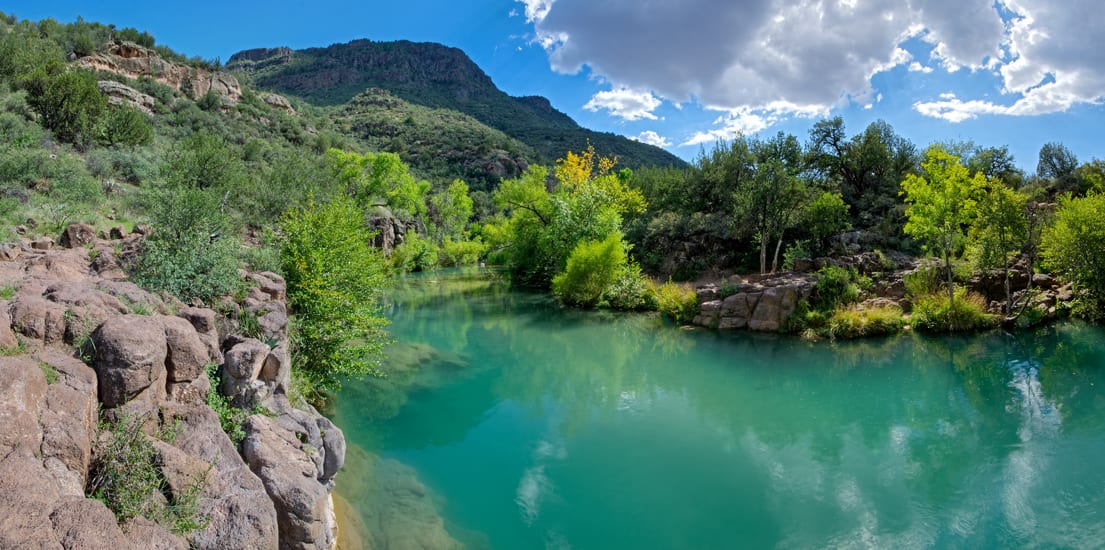Flowing from a series of mineral springs in central Arizona, Fossil Creek is known for its travertine pools and stunning aquamarine water. In an arid landscape it is a lush oasis, providing habitat for rare native fish, beavers, otters, leopard frogs, bats and an extraordinary array of bird species.
Sadly, this gem of a stream was dewatered for over a century. But restoration efforts by Arizona Fish and Game, U.S. Forest Service and others brought the creek back to life. The dam was removed, and today Fossil Creek is considered the most successful river recovery project in the Southwest. It is now one of only two Wild and Scenic Rivers in all of Arizona.
This summer, WRC committed to purchase the last unprotected parcel of land within the Fossil Creek Wild and Scenic River corridor. Although at 20 acres the property is relatively small, the impact of buying the land will be significant. The effort will benefit the creek’s rich fish and wildlife, protect outstanding scenic areas and archeological resources, and improve efforts by the Cococino National Forest to manage an increasing number of visitors.
What makes the effort truly worthwhile is the diversity of wildlife the creek supports. In all, more than 80 special-status species inhabit the area. Fifteen bat species occur in the river corridor, as do numerous bird species, including black hawks, peregrine falcons, bald eagles, Bell’s vireos, Lucy’s warblers and verdins. Following a decade of recovery work, the stream again supports nine native fish species, including spikedace, loach minnow, Gila topminnow, speckled dace and Sonora sucker. Along with the stream’s unique mineral formations, the presence of these fish gives the creek national significance.
Fossil Creek also contains evidence of thousands of years of human habitation, including pit house villages, pueblo sites, rock art sites and more. Today, as more and more people rediscover and visit Fossil Creek, WRC’s efforts will help Cococino National Forest ensure public enjoyment while minimizing impact on this fragile desert river ecosystem.


